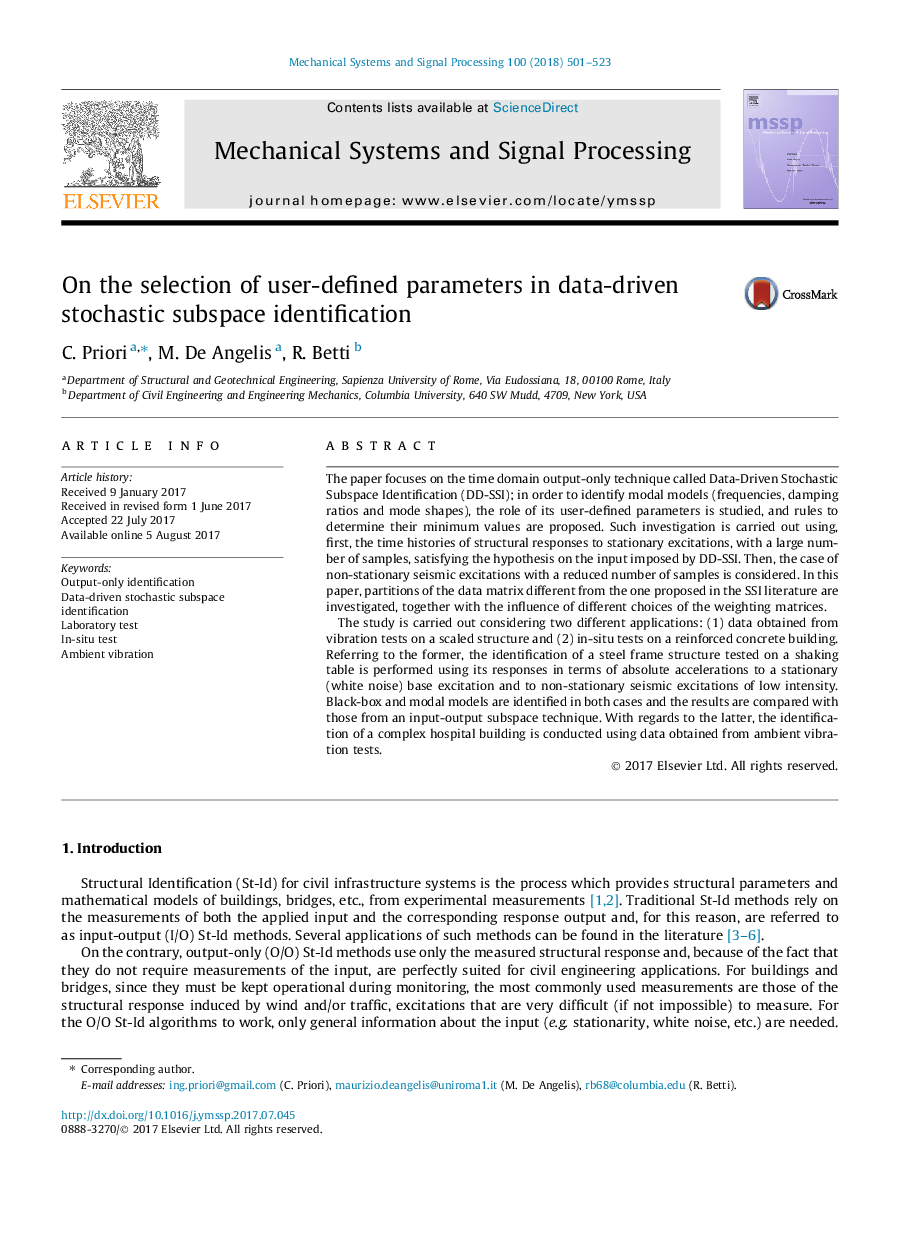| Article ID | Journal | Published Year | Pages | File Type |
|---|---|---|---|---|
| 4976650 | Mechanical Systems and Signal Processing | 2018 | 23 Pages |
â¢User-defined parameters in Data-Driven Stochastic Subspace Identification are studied.â¢Increasing the rows of the future output matrix can improve the identification.â¢Damping ratios are better identified with a proper selection of the parameters.
The paper focuses on the time domain output-only technique called Data-Driven Stochastic Subspace Identification (DD-SSI); in order to identify modal models (frequencies, damping ratios and mode shapes), the role of its user-defined parameters is studied, and rules to determine their minimum values are proposed. Such investigation is carried out using, first, the time histories of structural responses to stationary excitations, with a large number of samples, satisfying the hypothesis on the input imposed by DD-SSI. Then, the case of non-stationary seismic excitations with a reduced number of samples is considered. In this paper, partitions of the data matrix different from the one proposed in the SSI literature are investigated, together with the influence of different choices of the weighting matrices.The study is carried out considering two different applications: (1) data obtained from vibration tests on a scaled structure and (2) in-situ tests on a reinforced concrete building. Referring to the former, the identification of a steel frame structure tested on a shaking table is performed using its responses in terms of absolute accelerations to a stationary (white noise) base excitation and to non-stationary seismic excitations of low intensity. Black-box and modal models are identified in both cases and the results are compared with those from an input-output subspace technique. With regards to the latter, the identification of a complex hospital building is conducted using data obtained from ambient vibration tests.
